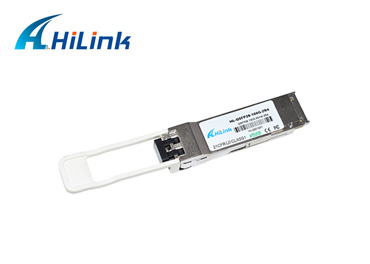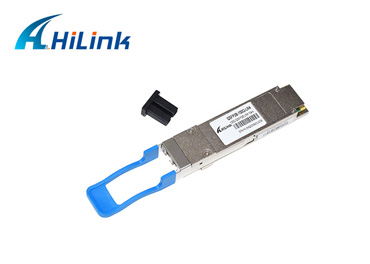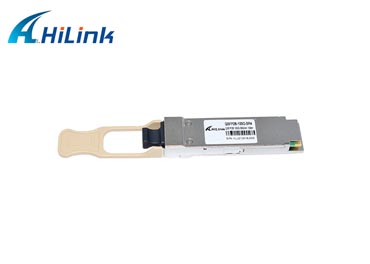How to Choose A Optical Transceiver?
Aug. 19, 2022
Choosing the right transceiver for your network is no easy task. With our expert guide, you can easily maximise network performance while optimising your spending the next time you choose a switch/router, fibre or support cabling. With so much variety on the market, the most important factor in choosing a transceiver is finding the specification that best suits your network needs.
The eight key considerations for network transceivers are
Form factor and connectors
Original equipment manufacturer (OEM) compatibility
Speed/data rate
Media
Type
Wavelength
Arrival
Environment
Hilink 100G QSFP28 ZR4 Optical Transceiver
Shapes and connectors
The term 'form factor refers to the standardised size and shape (or 'footprint') of an optical component, but other design features also help to create the definition of each standard. While there are many different transceiver form factors to consider, there are some criteria that are more generic than others.
What you need depends largely on the compatible form factor in the switch or router into which the fibre is to be inserted, so it's always good to check what your system accepts. Ensuring you can make connections between the optical transceiver and other optical hardware is a basic requirement for success. The connectors do not necessarily have to match between devices, but the cables connecting the two must be terminated in these connectors to bridge the two.
OEM compatibility
Now that we have determined that your fibre is suitable for your switch or router, we also need to ensure that it can communicate with it to pass data. The fibre in a port that is not coded for interoperability with an OEM router can make the port inoperable because they use a different language, even if it is physically suitable.
This can prevent your network from reaching peak overall performance. The best way to ensure you are using compatible optics is to only source third party transceivers from trusted suppliers who guarantee it.
100GBASE-LR4 100G 10KM QSFP28 LR4
Speed/data rate
Faster data rates (bits of data transferred per second) translate into increased user access quality, smoother 4K video streaming and more room for asynchronous connections.
Careful planning ahead is essential when upgrading fibre optic hardware, be it transceivers, direct connect cables or active optical cables, patch cords, media converters or routers/switches, to achieve faster data rates. Components that do not operate at similar data rates (or data rates that can be combined into a single high-speed rate) may block, impair or otherwise create bottlenecks in the data pipeline.
Media
Media refers to the physical composition of the cable carrying the data signal and is usually characterised by its material (media) and construction (cable pattern). Copper transceivers carry electrical signals over copper cables, while fibre optic transceivers carry optical signals over fibre. Both media perform similarly over short distances, however, the coverage benefits of fibre optic transceivers at 1G, 10G and 40G or higher data rates provide greater cost efficiency over long distances for Ethernet.
MPO/MTP 100G QSFP28 SR4
The second factor to consider is the cable mode you intend to use, either single-mode (SMF) or multimode fibre (MMF). Single-mode fibre offers greater coverage at a higher cost, while multimode fibre offers higher data rate capability at a higher price.
Multimode cables have larger cores to support greater simultaneous throughput through multiple optical modes simultaneously, while single-mode cables have narrower cores and are only suitable for single-mode light. Core diameter affects dispersion and signal loss over distance, so the narrower the core of a single-mode, the longer the distance. Therefore, your use case and coverage will usually determine whether you need to run multimode or single-mode fibre.
Type
When choosing a transceiver for your network, there are a variety of special technologies, features, functions and types to look out for. An example of such a transceiver type is a wavelength division modulation (WDM) transceiver.
A WDM transceiver is a single-mode fibre optic transceiver that transmits/receives signals in a specific wavelength band. By using WDM transceivers with multiplexer/demultiplexer pairs at different wavelengths, a single full-spectrum optical signal can be packaged together with multiple discrete signals for maximum density and performance.
If you want to get more information about the best optical transceiver, welcome to contact us today or request a quote.














